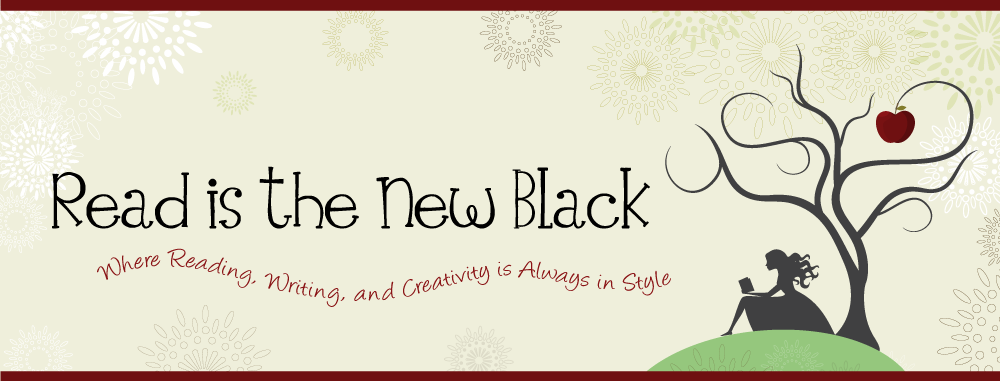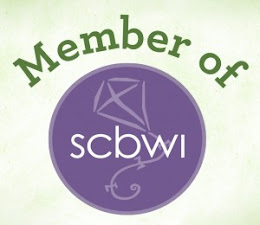 Nathan Bransford, kidlit author and former agent with Curtis Brown Ltd., writes an industry blog I've been following for awhile. Lately, Nathan has also been blogging about his new book, JACOB WONDERBAR AND THE COSMIC SPACE KAPOW (Dial). This middle grade novel is a fun read and it presents outer space exploration as a whimsical and worthwhile adventure for its three main characters.
Nathan Bransford, kidlit author and former agent with Curtis Brown Ltd., writes an industry blog I've been following for awhile. Lately, Nathan has also been blogging about his new book, JACOB WONDERBAR AND THE COSMIC SPACE KAPOW (Dial). This middle grade novel is a fun read and it presents outer space exploration as a whimsical and worthwhile adventure for its three main characters. Interviewing Nathan, I learned he is from Colusa, California, a small farming town in the Central Valley. Of his childhood, Nathan remembers spending a lot of time riding around rice fields with his dad and having what he calls a “very quintessential small town experience,” which included riding bikes around town, attending Friday night high school football games, and being in a place where everyone knew everyone. He studied English at Stanford and now lives in San Francisco.
 How did you decide you wanted to be a kidlit author?
How did you decide you wanted to be a kidlit author?I just had the idea for Jacob Wonderbar and decided to go with it. It wasn't something I really planned.
How do you craft humor for a middle grade audience?
I try as much as possible to remember the things I thought was funny around that time. And I also believe we have an inner-ten-year-old inside us, and I try to channel it as much as possible.
In JACOB WONDERBAR AND THE COSMIC SPACE KAPOW, you created three distinct main characters. We have Jacob Wonderbar, who acts out on his private angst. We have Sarah, who tries hard to be the anti-girlie girl. And we have Dexter, who plays it safe but rises to the occasion. How were you able to establish three different points of views for Jacob, Sarah, and Dexter?
It takes a lot of work, and is something I find somewhat difficult. It's one thing to have a character and to know their traits, but when you're telling the novel from three different perspectives, you really have to get inside the characters' heads. It just takes time and writing. I think you kind of get to know the characters as you go along and then need to go back and revise the beginning based on what you learn.
On Planet Paisley, the resident substitute teachers are portrayed as scary aliens. What kind of experiences with substitute teachers have you had growing up?
Haha, I actually had great subs growing up, though I definitely remember as a kid finding subs to be somewhat strange. As a kid you get so used to the predictability of your teacher being there every day, and all of a sudden without any advance warning some new person will arrive and throw your day in an unpredictable direction. It kind of felt like an alien had just shown up, no matter how good the sub was.
How much did you have to read up on outer space and space travel before you wrote this book?
I actually took a class in college called "Cosmic Horizons," which was about the physics of the universe (and possibly multi-verse). My professor was an expert in (hope I'm getting this right) multi-planar and multi-dimensional fields and how there may be sections of the universe with more dimensions than the ones we're used to. It basically broke my brain.
But I threw all that out with "Jacob Wonderbar." In order for the novel to make sense, the kids would have to be traveling literally trillions of miles an hour and moving many times the speed of light as they're flying around the universe. I like to think of it as cartoon physics, sort of like the Road Runner cartoons. If I got bogged down in explaining the physical (im)possibilities of how the kids are flying around space, I think I'd lose my audience.
 What's next for you and Jacob Wonderbar?
What's next for you and Jacob Wonderbar?The next book in the series, JACOB WONDERBAR FOR PRESIDENT OF THE UNIVERSE, is coming out in the spring of 2012, and I'm working on (tentative title) JACOB WONDERBAR AND THE INTERSTELLAR TIME WARP.
What are some of your favorite kidlit books and authors?
Everything by Roald Dahl, ISLAND OF THE BLUE DOLPHINS by Scott O'Dell, MY SIDE OF THE MOUNTAIN by Jean Craighead George, the Calvin & Hobbes comics, BY THE GREAT HORNSPOON by Sid Flesichman, and HARRY'S MAD by Dick King-Smith.
Thanks for the opportunity!
You’re welcome, Nathan!











